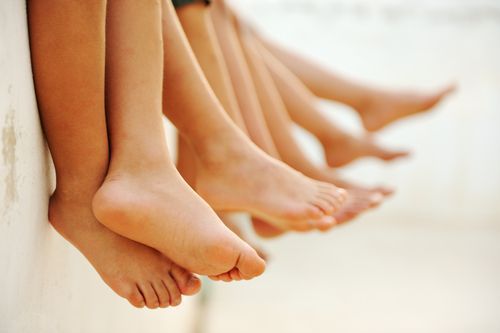Do flat Feet Need Treatment?

Question: Telma, what I don’t understand is, why do I need to see a physio if I have flat feet?
Did you know that all children have flat feet until about two years of age? They look like they have flat feet and this is partly due to the fat pad in the inner arch of the foot. We call this the longitudinal arch. In other words, the arch is not fully formed until age two. All children under 2 have flat feet. When considering treatment, we are talking about the child beyond age two and older who has flat feet.
First of all what are flat feet? In medical terms, we call it pes planus. A pes planus or a flat foot is a foot that rolls in. If you look at a person from the back, you see that they are taking more weight on their inner arch then they should and therefore the foot flattens. This is why we call it flat foot.
A flat foot affects how that person walks, you can see this with a computerized gait analysis. The way the weight is taken by the foot changes and if you watch that person walk.
There are three parts to walking. First, the heel strikes the ground, then we roll through the middle part of the foot and then we push off with the first and second toes. This is normal.
When a person has a flat foot he/she takes too much weight through the heel on the side of the foot that is flat. You will hear, what is referred to as the elephant foot, slam, slam, slam. The heel hits much harder than it should. You can also see this in the gait scan because there is a red area under the heel. With time this will put a strain on the spring ligament under the foot, what we call the plantar fascia and the person could come down with plantar fasciitis or heel spur syndrome.
The other way patients will present with flat feet is that they do not heel strike very well. Instead, they roll into the inner arch and push off. You can see this on the gait scan as well.
With this kind of patient, the problem will not be as much plantar fascia, but the problem will be further up the chain. In other words, if the foot is not taking the impact of the ground well, the problem will reflect in the knees, the hips or the back.
If you have a flat foot, it can put a strain on your heel itself. This may give you a heel spur syndrome or may lead you to have knee/hip and back pain.
Ask about our free gait analysis.

